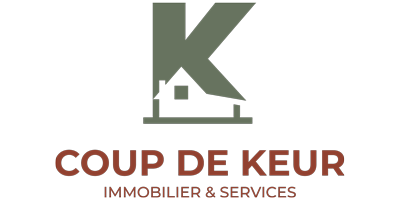Harbor House accepts men from all walks of life who are committed to recovery and self-sufficiency. Through Case Management and regular meetings, we offer the client an opportunity to be supported while gaining independence and self-reliance. Homeward Pikes Peak works with a variety of agencies who can assist in job placement. We know the decision to seek treatment is difficult, and we applaud you for the courageous effort you are taking to find refuge at Harbor House.
Residential Treatment
We also provide relapse prevention services, including regular drug and alcohol testing. In these areas, a drug and alcohol halfway house is licensed by the Department of Health and has staff coverage 24 hours a day. Now, during the COVID-19 pandemic, it is even more important that the public focus on the jail-like conditions of halfway houses which put vulnerable populations at risk.
As of August 18, federal Residential Reentry Centers (RRCs) had 122 active cases, and 9 deaths, of coronavirus among halfway house residents nationwide. However, recent investigative reports suggest that the real numbers are even higher, as the BOP continues to underreport cases in RRCs and state-level data is nearly non-existent. Living in a halfway house has many benefits for people who have just finished addiction treatment or currently undergoing treatment. Residents develop healthy coping skills through treatment sessions, lectures, assignments, and scheduled activities.
Substance Abuse and Mental Health Services Administration (SAMSHA) helpline
In a halfway house in New Jersey, around 5,100 convicts have escaped the state’s privately operated facility since 2005. With this report, the federal government has been working on improving its oversight mechanisms and comprehensive adjustments to keep residents safe. Federal halfway houses are designed to help low-risk and high-risk criminals nearing the end what is a halfway house of their prison sentences readjust to society. They facilitate residents’ re-entry into the workforce and foster healthy relationships with their families and communities. We also offer Transitional Living (TL) housing services, on campus as well as in downtown Hot Springs, for those who complete residential care and wish to continue their treatment.
Our treatment team consists of dedicated, motivated individuals working together to provide evidence-based care targeted to the unique needs of persons served. Our model is centered in Acceptance & Commitment Therapy, or ACT– a mindfulness- and acceptance-based behavioral therapy that capitalizes on the person’s core values to create life-saving change. Supplemental groups on parenting, career & educational goals, anger management, and financial literacy–among other topics–are also provided in the residential setting. Some facilities, like community-based correctional facilities, can serve dual functions that blur the lines of what facilities are and are not halfway houses. Harbor House takes pride in offering hope to our clients with experience and knowledge.
Programs
- Halfway houses provide a safe and supportive setting for those in early recovery from drug or alcohol addiction.
- In some cases, residents may be denied access to certain privileges, such as phone calls to a loved one.
- These facilities offer a variety of services, including those aimed at promoting mental health stability and at the development of life skills.
- Stable and supportive sober living with an emphasis on healing, nurturing community connections, and achieving self-sufficiency.
This is a highly-structured living environment, consisting of up to six hours of group sessions daily, with weekly individual counseling and coaching sessions. A stay in residential care typically lasts about days, with some variation depending on progress made. Additionally, we offer Specialized Women’s Services (SWS), a harbor house sober living day program for expecting mothers and mothers of small children. This modality involves all the elements of the traditional residential program, but with a greater emphasis on parenting skills, connecting with community resources, and household management.
There are different types of halfway houses, each of which is oriented toward helping individuals transition from specific situations. Some halfway houses, for example, provide support for persons with substance use disorders. Whether or not someone can bring their own medications into a sober living home depends on the facility’s policy. Some facilities permit residents to bring outside medications but have restrictions on the amount and type of medication. Other facilities have restrictions in place that require medications administered by staff members. Sober living homes vary in cost from inexpensive ($100-$300/month) to expensive (over $2,000/month), but many are in the range of $400 to $800 per month depending on where you live.
A transitional, sober-living home for motivated individuals to overcome addictions. The programming is a one-year structured program with an Intensive Outpatient Program, requirements for working, and involvement in the community.This stand-alone apartment complex features 10 units. Each apartment is a two-bedroom unit providing residents their own room and a shared kitchen. The residence also offers a gathering room for social activity including an on-site gym, computer, pool table, and laundry facilities. Our program starts by helping you to become successful not only in recovery, but also in life. To support this goal, we offer 12-step meetings any day of the week within minutes at multiple clubhouses, and residents will attend meetings regularly.
Each resident works toward transitioning back into the community by seeking employment, doing volunteer work, and addressing housing needs. Those who obtain employment and/or volunteer work during their stay may be approved for an abbreviated schedule of required activities. However, with jails and prisons becoming increasingly crowded, halfway house programs demonstrated remarkable functional flexibility. Board members often provided access to recreational, religious, medical, vocational, and transportation services, as well as assistance with obtaining gainful employment. The concept of the halfway house is predicated upon the ideals of humanitarianism, rehabilitation, and reintegration.
